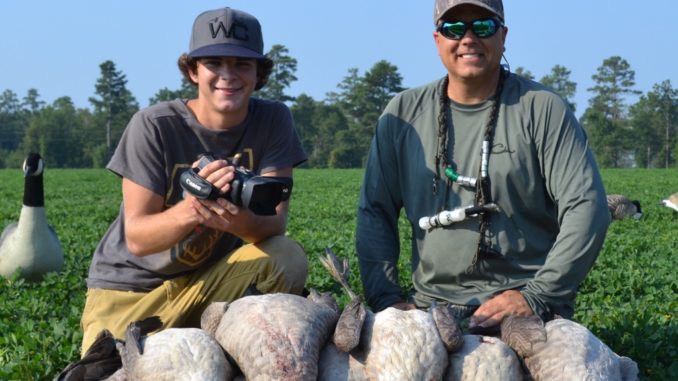
Scouting, calling, camouflage are all important
Late Canada goose season is in full swing, and Daryl Hodge of Wrecking Crew Guide Service in Lancaster said things are a little tougher than they are during the early goose season. But, he has some tips to help hunters limit out just the same.
“These late season goose are tougher to pattern than the early season birds. Those early season geese are mainly resident birds, and you can watch them all summer and get a feel for their habits. They aren’t as easy to sway with calling in the early season, but you’ll already know their common bedding-down areas, flyways, eating spots, etc by then anyway. These late season birds are migratory, so they aren’t sticking around very long. You need to scout them hard, but even then, if they leave the area – and most of them will at some point – then you’re back to square one,” said Hodge.
These late season geese though, according to Hodge, are easier to draw in with calling. “Those early season geese aren’t concerned with what other groups of geese are doing. They are pretty territorial and not very social with other groups of geese, so they don’t pay attention to other geese calling them. But these late season geese are more social, and don’t know the lay of the land as well, so they are all ears when they hear other geese calling them,” Hodge said. “So even though they are more difficult to pattern, they are easier to call in because they respond to calls better.”
Another challenge during the late season is that the agricultural fields many hunters, including the Wrecking Crew use, are planted with wheat that is now bright green and three or four-inches tall. It’s tougher to blend in here than in the early season.
“What we do in that case is we put the blinds closer together and put more decoys right beside, in front, and behind the blinds. From the sky, we want it to look like one big spot instead of a bunch of smaller spots that stand out better. The additional decoys give geese confidence that it’s just one dark spot in the field,” said Hodge.




Be the first to comment